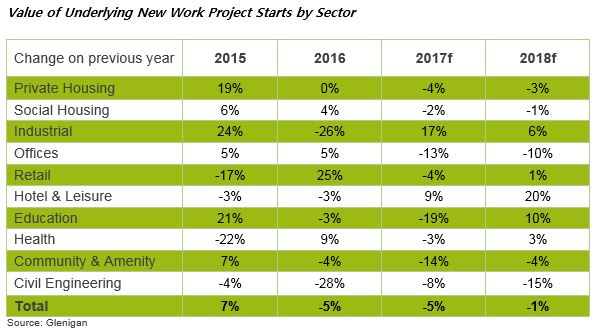New plans set out by the Department for Transport will revolutionise British infrastructure and boost the construction sector’s productivity in a move that could generate savings of £15 billion a year.
The plans were revealed alongside the National Infrastructure and Construction Pipeline, which sets out projects for the next 10 years.
This £600 billion pipeline includes both public and private investment. It will give certainty to industry that there is great appetite to develop infrastructure and will encourage the sector to invest in the right technology and skills to meet this demand.
The Transforming Infrastructure Performance programme sets out how the government will ensure these projects are delivered swiftly and efficiently. It contains ambitious plans to transform infrastructure delivery over the long-term, using the government’s influence to drive modern methods of construction so Britain can lead the world in high-tech building. The Transport Infrastructure Efficiency Strategy sets out how these lessons will be applied to drive efficiency and productivity in transport.
Andrew Jones MP, Exchequer Secretary to the Treasury, said “We are backing Britain with a record amount of infrastructure investment as we build an economy fit for the future. That’s why we’re working with the industry to skill up and scale up for the challenges ahead.
“Investing in infrastructure boosts productivity for the economy as a whole. The scale of the investment we are talking about here will deliver a step change for our country.”
Transport Secretary Chris Grayling said added “We’re undertaking the most ambitious improvements in our transport network this country has seen for decades. But we must also drive forward plans to ensure these infrastructure projects are completed on time and on budget.
“World-leading projects such as Crossrail, the Ordsall Chord and the huge investment programme in our major roads show that Britain can deliver on time and on budget, boosting jobs and growth and creating new opportunities across the nation. But we want to do better. This strategy shows the way and sets out our standards for how we will do more and better in future.”
The government is a major player in construction and delivers many projects every year, such as transport, schools, prisons and hospitals. This accounts for a quarter of all construction projects, and using this purchasing power will enable ministers to drive innovation and encourage firms to invest in modern methods and technology.
Methods such as off-site manufacturing, where projects are part-constructed before being assembled on location, can boost productivity by reducing waste by 90% and speed up delivery times by more than half (60%). For example, a school that typically takes a year to build could be done in just over 4 months.
The announcements tackle this head on and give the sector the certainty to start investing in the right technology and skills.
Tony Meggs, Chief Executive of the Infrastructure and Projects Authority (IPA), said “Publishing our Transforming Infrastructure Performance (TIP) programme demonstrates our commitment to tackling the annual £15 billion productivity gap in construction. The IPA has a significant role to play in helping to create a more productive and innovative sector.
“We want to maintain confidence in the sector and will work alongside industry, using our purchasing power to drive the adoption of modern methods of construction in both new and existing infrastructure. The scale of ambition is great but by aligning our initiatives we can work with industry to deliver transformation for the sector.”
Andrew Wolstenholme, Co-Chair of the Construction Leadership Council (CLC), said “The Transforming Infrastructure Performance programme presents a huge opportunity for the industry and government to reap the economic gains from improving productivity during the delivery of the UK’s £600 billion infrastructure pipeline. Transport is a huge part of that.
“I am delighted that the IPA, DfT and CLC are working closely to encourage construction clients to procure on the basis of whole life value, deliver more industry led innovation, develop the skills we need for the future and give the UK a competitive advantage in exporting new technologies and expertise. I am proud to chair the Transport Infrastructure Efficiency Taskforce which will ensure these strategies are brought to life across the transport sector.
“It all adds up to better economic and social infrastructure, as well as more homes, delivered quicker, at better value and more sustainably than ever before, underpinning the UK’s growth and providing jobs all over the UK.”




